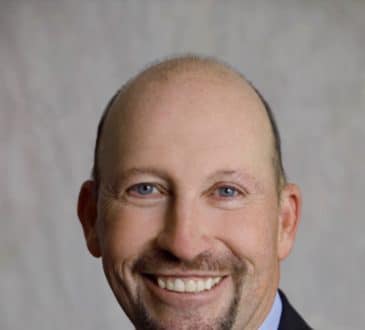IT’S A NEW GROWING SEASON IN THE “SALAD BOWL OF THE WORLD” …AND TIME TO GROW THE U.S. ECONOMY

As farmers across the nation prepare for another growing season, it’s a good time to remember how crucial it is to support American agricultural. Strengthening this industry allows us as a nation to enjoy abundance and economic prosperity. Agriculture (crops, food, and related industries) contributes some 5.5% of the nation’s gross domestic product: that is, about $1.420 trillion. Farm output alone translates to roughly 0.9% of the GDP…about $223.5 billion annually.
With every new season comes the imperative to find ways to bolster growers, shippers, packers, transporters, retailors…which is vital in an industry with already-slim margins. I believe there is one key vehicle to do this: legislation.
It may seem obvious, but legislation trickles down to so many aspects of this industry. Basic legislative support is critical. Take, for example, disaster relief. Ensuring that House leadership passes emergency recovery packages for agricultural producers is incumbent upon local leadership. California saw massive storms last year, in January and March, that severely impacted the industry. Securing emergency relief for producers allowed many to stay in business.
Agricultural Disaster Relief through the Office of Management and Budget should be included in any administration’s emergency supplemental funding. With the dedicated intervention of concerned legislators in California, a whopping $2.8 billion was earmarked to support farmers and others who suffered losses due to natural disasters last year. Major Disaster Declarations following both sets of storms unlocked significant federal funding for impacted communities, local governments, and businesses, including emergency loans procured from the USDA.
The second key area of legislative support is for infrastructure. Clearly, funding must be made available for infrastructure repair and improvement. This should be a priority for budgeting. Much of the infrastructure in rural and farming communities is old, crumbling, and obsolete. Without infrastructure upgrades to support the industry—including roads and bridges, ports and waterways, industrial wastewater treatment plants, erosion, broadband, river and levy management, emission controls, power, and much more—there can be no growth, expansion, and forward momentum.
The third area, as is the case in every industry, is education: Educating people and equipping the next generation to fill the job requirements of the industry. However, it’s not only offering training, but making that training enticing: that is, inspiring and incentivizing a new workforce. Solid opportunities in the nation’s growing AgTech space should attract young people to careers in the ag industry.
Talent is needed at every level. We are hiring executives with exceptional backgrounds, from facilities life cycle management to sales, marketing, and project management within the fresh produce space. Organizations need this kind of high-level expertise to expand and move into new territory.
Farm workers are equally essential. The Farm Workforce Modernization Act of 2021 was passed to address the acute labor shortage. This bill became the first agriculture labor reform legislation to pass the House of Representatives since 1986. It allows some 1.5 million farmworkers to receive legal status, and also enhances the temporary agricultural visa program to give more flexibility to employers while ensuring critical protections for workers.
Agriculture must be supported by innovation. Bipartisan efforts are required to spur R&D in crop science, precision agriculture, and other projects that benefit agricultural communities. In my own cold storage businesses, the process of “pre-cooling” has been a groundbreaking technology. Pre-cooling is quickly zapping the field heat from freshly harvested produce, thus removing microbes that hasten decay and extending the shelf life of vegetables and fruits and improving their quality. This essential step implemented prior to cold storage warehousing was unheard of a decade or two ago. Now it is widely understood to be a critical step in the post-harvest cold chain.
Here’s another example: almost a century ago, our iconic companies manufactured block ice to sustain freshly-harvested produce on its way to market. Today, we use state-of-the-art vacuum tubes, ice generators, ice injectors, and hydrocoolers in technologically-advanced, automated, robotic facilities for cold storage of fresh produce, after harvest and during transportation and distribution to major national and international markets.
Here in California’s sunny Salinas Valley, we remain hard at work while mindful of the blessings we enjoy: a short growing season that yields our bountiful assortment of fresh produce, making us the Salad Bowl of the World.
If we want to retain that illustrious status, and if we want our partners coast to coast to be equally productive, the legislators of this nation must make farm bill improvements to support our efforts.
Written by Dr. Jim White.
Have you read?
Ranked: Most Environmentally Friendly Countries in the World, 2023.
Report: Countries with highest numbers of child marriage, 2023.
Ranked: These Are The Best Museums in the United States, 2023.
Ranked: These Are the Countries with the Highest Kidnapping Rates, 2023.
Best High-Demand Products for Profitable Online Selling, 2023.
Top 20 wealthiest Owners in American sports, 2023.
Add CEOWORLD magazine to your Google News feed.
Follow CEOWORLD magazine headlines on: Google News, LinkedIn, Twitter, and Facebook.
This report/news/ranking/statistics has been prepared only for general guidance on matters of interest and does not constitute professional advice. You should not act upon the information contained in this publication without obtaining specific professional advice. No representation or warranty (express or implied) is given as to the accuracy or completeness of the information contained in this publication, and, to the extent permitted by law, CEOWORLD magazine does not accept or assume any liability, responsibility or duty of care for any consequences of you or anyone else acting, or refraining to act, in reliance on the information contained in this publication or for any decision based on it.
Copyright 2024 The CEOWORLD magazine. All rights reserved. This material (and any extract from it) must not be copied, redistributed or placed on any website, without CEOWORLD magazine' prior written consent. For media queries, please contact: info@ceoworld.biz
SUBSCRIBE NEWSLETTER








